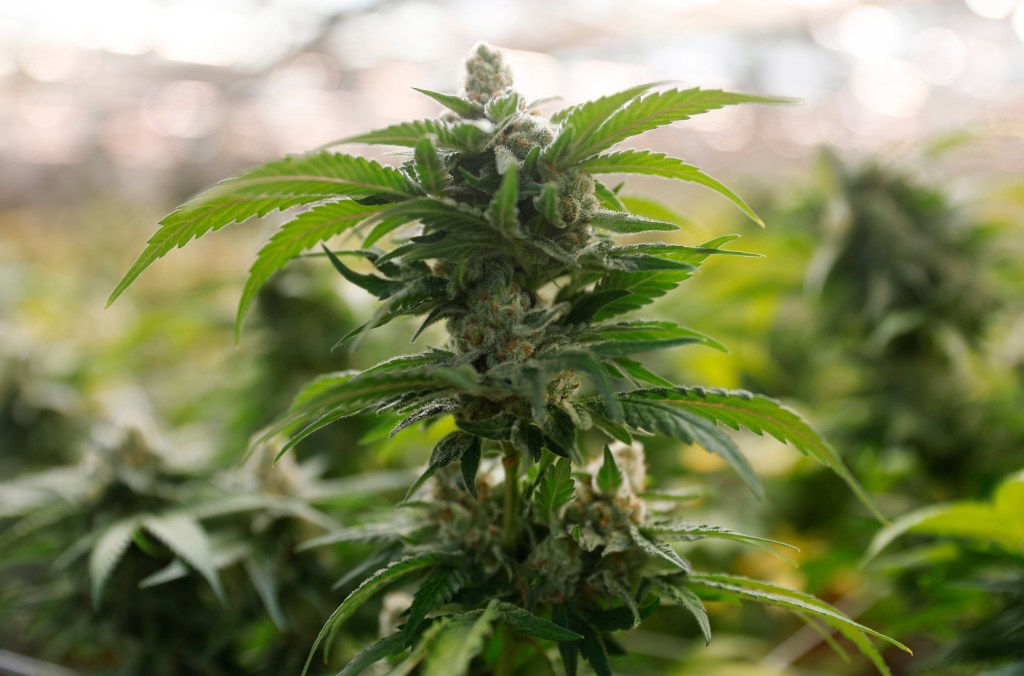Pot problems
Recreational cannabis sales began 7 years ago. Many buyers and sellers have played by the rules, but the illegal growth and sale of the plant continue to undermine those obeying the law.
The illicit market continues to account for about 60% of the cannabis consumption in California.
California’s excise tax of 15% rose to 19% on July 1. The tax hike took effect after the California Senate rejected a proposal to freeze the cannabis excise tax rate in the recent budget trailer bill.
Since its establishment in 1983, California’s Campaign Against Marijuana Planting has involved more than 110 law enforcement agencies, making it one of the largest such task forces in the U.S. But things have changed in the past couple years.
Another new effort was organized by Gov. Gavin Newsom in 2022 and is called the Unified Cannabis Enforcement Task Force. The UCETF has been charged by the governor to better align state efforts and increase cannabis enforcement coordination between state, local and federal partners.
UCETF’s enforcement actions protect consumer and public safety, safeguard the environment, and deprive illegal cannabis operators and transnational criminal organizations of illicit revenue that harms consumers and undercuts the regulated cannabis market in California.
UCETF receives support from the California Department of Tax and Fee Administration, California Department of Corrections and Rehabilitation, California Department of Parks and Recreation, California Department of Pesticide Regulation, Employment Development Department and California Department of Forestry and Fire Protection.

Retail sales of cannabis in California were more than $4.66 billion in 2024. The top agricultural commodities in the state were the following:
Dairy Products, Milk — $8.13 billion.
Grapes — $6.52 billion.
Cattle and Calves — $4.76 billion.
Lettuce — $3.93 billion.
Almonds — $3.88 billion.
Enforcement and eradications in California are different than the total U.S. average. DEA efforts in California have increased disproportionately in recent years relative to the rest of the U.S. From 2011–2016, DEA eradications in California were 62% of national eradications. From 2019–2022, they accounted for 84% of total eradications. This could imply that unlicensed production has increased in California at a higher rate compared to the rest of the U.S.
The charts above show annual plant eradications and seized cannabis products in California reported by the DEA, California Department of Fish and Wildlife (CDFW), DCC and California Department of Food and Agriculture (CDFA) and California’s Unified Cannabis Enforcement Task Force (UCETF), the Department of Justice’s Campaign against Marijuana Planting (CAMP) and Eradication and Prevention of Illicit Cannabis (EPIC).
DEA data is only available up to 2022.
UCETF eradications and seizures were low (30,000 plants and 19,000 pounds) in 2022, the first year the task force operated; eradications increased to 318,000 plants and 190,000 pounds in 2023, and there were 179,000 plants eradicated and 115,000 pounds of product seized in 2024. UCETF continues to expand its operations.
UCETF Numbers from July 1, 2024, to June 1, 2025
Estimated value of cannabis seized: $366,783,409.83
Total cannabis seized: 220,184.45 pounds
Plants eradicated: 343,102
Arrests: 24
Cash seized: $550,017
Firearms seized: 44
Plants seized by county July 1, 2024 to June 1, 2025 by the Department of Cannabis Control
DCC’s Law Enforcement Division total data for California from July 1, 2024, through June 1, 2025
Estimated value of cannabis seized: $315,836,629
Number of illegal plants eradicated: 175,554
Pounds of cannabis seized: 169,347
Search warrants served: 187
Firearms seized: 88
Money seized: $680,954
Arrests: 167
Number of locations red tagged: 73
Number of toxics present at locations: 24

Top 5 counties for plants seized
1. Stanislaus 29,457
2. Los Angeles 29,140
3. Alameda 28,709
4. Nevada 21,497
5. Orange 13,286
The downside
According to a recent press release from the Cannabis Business Times, California’s legal cannabis market has been in steep decline since 2021, with licensed sales dropping 34% while illicit operators control an estimated 60% of total market activity. More cannabis licenses are now inactive or surrendered (10,828) than active (8,514), representing the loss of 7,100 small farms, thousands of brands, and nearly 22,000 jobs over two years.
In response, the California Cannabis Operators Association, the state’s largest cannabis industry group, has launched an advocacy campaign in support of Assembly Bill 564, sponsored by Matt Haney, D-San Francisco, urging legislators not to raise taxes on consumers and patients. A.B. 564 would reset the excise tax at the previous rate of 15%.
“A 25% tax hike on an industry that’s barely hanging on is a full-blown disaster, and absolutely should have been avoided,” Haney said. “Raising this tax is a slap in the face of small cannabis businesses who simply can’t afford it and are competing with an illegal market that is booming.”
The bill passed the Assembly with strong bipartisan support and is now pending in the California Senate.
Cannabis status by state
California was the first state to legalize medical marijuana in 1996. Since then, the medical use of cannabis has been legalized in 40 states. The recreational or adult use of cannabis has been approved in 24 states. Pennsylvania is could be the 25th state later this year.

Taxable cannabis sales in California dropped to $1.09 billion for the first quarter of 2025, down 30% from their peak in early 2021 and the lowest quarterly sales in five years.
In 2023, California retail stores sold $5.14 billion worth of cannabis products, which would be the second-highest agricultural commodity after dairy and before grapes.
Sources: California Department of Cannabis Control, state attorney general’s office, Cannabis Business Times
Originally Published:



